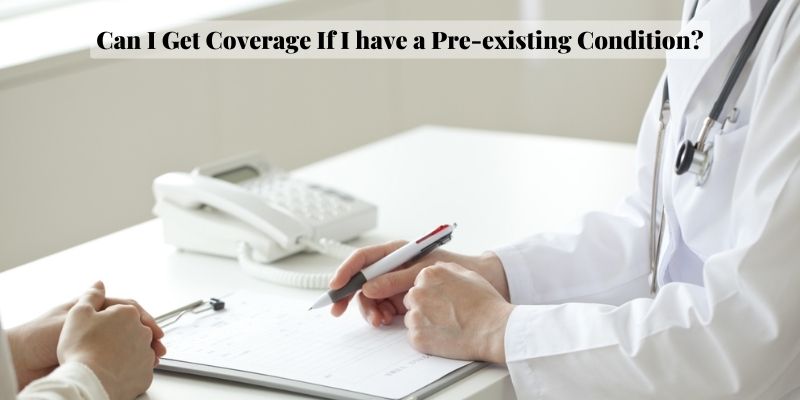How Long Does the Pre-Existing Condition Exclusions Period Last? The pre-existing condition exclusion period is a clause in health insurance that temporarily restricts or excludes benefits. The decision is made on the assumption that the policyholder had a medical condition before signing up for a health plan. Pre-existing exclusion periods were severely limited by the Affordable Care Act (ACA), although they are still possible. In this article, newvehiclez.com will discuss pre-existing condition exclusions period.
Contents
How the Pre-existing Condition Exclusions Period Works
An insurer’s obligation to give benefits for a limited number of pre-existing conditions is limited by a pre-existing condition exclusion period, which does not apply to medical benefits provided under a health insurance policy for other forms of care.

For a few months after starting a policy, a policyholder might be barred from collecting benefits for a pre-existing heart problem, yet still be able to get treatment for illnesses like the flu that don’t count as pre-existing conditions.
Conditions for Exclusion
The Health Insurance Portability and Accountability Act of 1996 (HIPAA) limits how insurers can restrict some benefits while also requiring insurers to offer coverage to anyone enrolled in group health plans.
Prior to HIPAA, employees with persistent medical conditions or who required ongoing treatments and medication frequently felt compelled to remain at their existing company since a new employer’s health plan would require a protracted wait for coverage or refuse to pay any costs associated with the disease. The act established rules for when and how insurers could deny health insurance to people who had pre-existing diseases before enrolling in the policy.
For the first 12 months following enrollment, or for an additional 18 months in the case of a late enrollment, HIPAA did permit insurers to refuse to cover pre-existing medical issues.
Reducing the Pre-existing Condition Exclusions Period
By demonstrating that they had creditable coverage prior to enrolling in the new plan, individuals can shorten the pre-existing condition exclusion period. Typically, this is done with a certificate of continuous coverage from the prior insurer, however they may also be able to provide other documentation.
The exclusion period countdown starts after any plan-mandated waiting period, and insurers are required to give written notification that a pre-existing condition is used. The ability of insurers to incorporate a pre-existing condition exclusion period may be subject to extra limitations in various states.
The ACA and Pre-existing Health Conditions
The Affordable Care Act, which was passed in 2010, makes it illegal for insurance companies to refuse coverage to or increase premiums for those with any form of pre-existing diseases. Asthma, diabetes, or cancer are examples of pre-existing conditions for which health insurers are no longer permitted to charge you or your child more or refuse coverage. There is no way for them to limit benefits for such disease. They cannot refuse to pay for treatment for a pre-existing condition once you have insurance.

Although many insurers are no longer able to enforce the pre-existing condition exclusion period due to the Affordable Care Act, it still happens. This typically occurs as a result of legacy acceptance from earlier plans being incorporated into the periods; this type of insurance, purchased prior to March 23, 2010, is known as a “grandfathered health plan.”
What Is a Pre-existing Condition?
Any medical condition, such as diabetes or cancer, that you had at the time you applied for insurance qualifies as a pre-existing condition. Under the ACA, insurers are not allowed to penalize you or refuse to pay for your pre-existing condition’s treatment.
How Long Can a Prior Condition Be Disregarded?
Pre-existing conditions were harder to remove from coverage because of the Affordable Care Act. As a reason, they are almost never included in employer-sponsored group health plans, albeit a new employee may need to wait up to three months before receiving total coverage. They are entirely covered as soon as the plan goes into force, and there are no exclusions for pre-existing conditions.
Buying individual insurance through a state or the federal health marketplace is equivalent. Pre-existing condition exclusions under non-ACA-compliant plans are often only permitted for a limited time—either 12 or 18 months, depending on when you enrolled.
Can I Get Coverage If I have a Pre-existing Condition?
Yes. The Affordable Care Act prohibits health insurance providers from denying you coverage or raising your premiums solely on the grounds that you have a pre-existing condition—a medical condition you had before the start date of your health coverage. The only “grandfathered” individual health insurance plans—the kind you purchase alone and are not provided by an employer—are the only ones that are exempt from the pre-existing coverage regulation. There is no requirement that pre-existing conditions be covered.

Do Short-Term Health Plans Cover Pre-existing Conditions?
No, pre-existing conditions are typically not covered by short-term health plans, and claims will be rejected if the service or treatment is caused by one. According to the state, short-term insurance contracts can “look back” for pre-existing conditions for anywhere between the last six months and the last five years.
Can Pregnancy Be Considered a Pre-existing Condition?
No, because to the Affordable Care Act, pregnancy is not a pre-existing condition. (It might have been before to the act’s passage in 2010). Additionally, pre-existing condition exclusions cannot apply to newborns or children who have just been adopted if they enroll in a plan within 30 days of the adoption.
